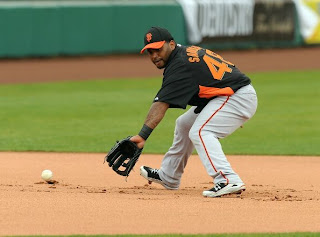I don't remember where I found this and still don't know who wrote it but I always get the chills when I read it. Great players usually are supported by great parents who have a good perspective on the game.
This is your first game, my child. I hope you win.
I hope you win for your sake, not mine.
Because winning’s nice.
It’s a good feeling.
Like the whole world is yours.
But, it passes, this feeling.
And what lasts is what you’ve learned.
And what you learn about is life.
That’s what sports is all about. Life.
The whole thing is played out in an afternoon.
The happiness of life.
The miseries.
The joys.
The heartbreaks.
There’s no telling what’ll turn up.
There’s no telling whether they’ll toss you out in the first five minutes or whether you’ll stay for the long haul.
There’s no telling how you’ll do.
You might be a hero or you might be absolutely nothing. There’s just no telling.
Too much depends on chance.
On how the ball bounces.
I’m not talking about the game, my child.
I’m talking about life.
But, it’s life that the game is all about.Just as I said.
Because every game is life.
And life is a game.
A serious game.
Dead serious.
But that’s what you do with serious things.
You do your best.
You take what comes.
You take what comes
Winning is fun.
Sure.
But winning is not the point.
Wanting to win is the point.
Not giving up is the point.
Never being satisfied with what you’ve done is the point.
Never letting up is the point.
Never letting anyone down is the point.
Sure.
But lose like a champion.
Because it’s not winning that counts.
What counts is trying.
- Author unknown



















